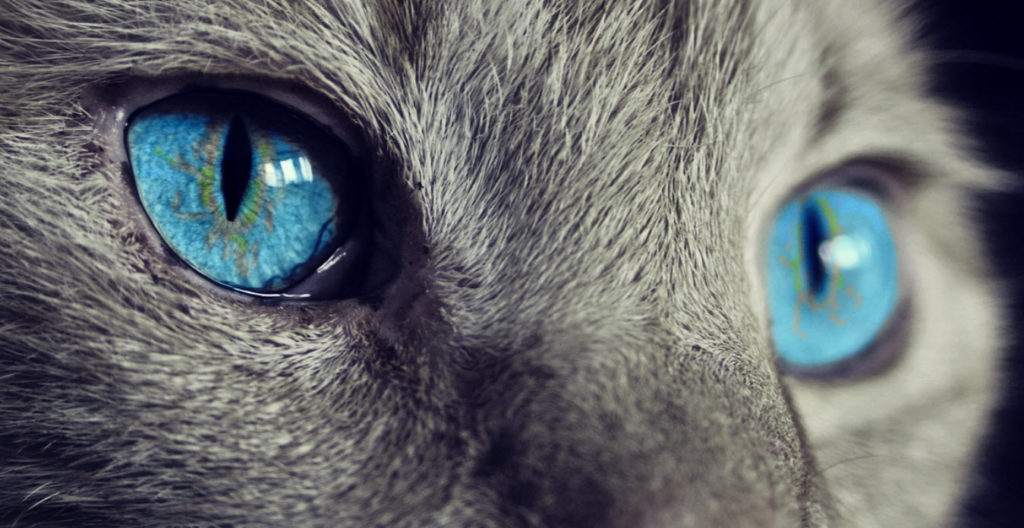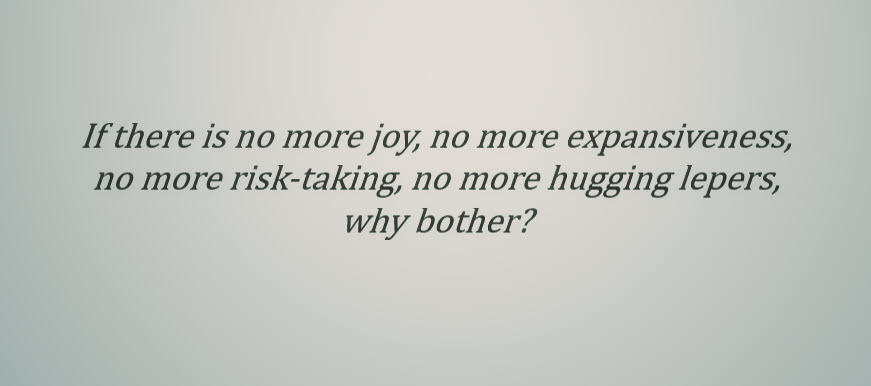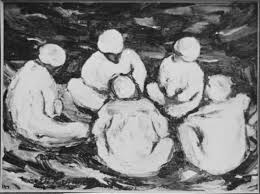Okay, y’all, God help me, here goes…Please note I am not speaking ex cathedra here, from my post as a Wisdom leader, but as a fellow human being speaking my own truth…
****************************
PANDEMIC AT PENTECOST – A personal letter on COVID, courage and love, from Cynthia Bourgeault
At the start, it was for two weeks. Then a month. Then two months. Then the whole summer. And now, more and more are talking “well into the fall…”
Slowly we are realizing we are in it for the long haul. The Covid-19 pandemic is not about to go away any time soon.
The problem with all our dramatic spring behavioral shifts is that they were based on a short-term strategy. “Flatten the curve.” “Social distancing.” Zoom everything. Shut down businesses, close up restaurants, postpone the start of the summer tourist season. Then, as the grim picture continued to fill in: cancel the summer camps, the college summer sessions… quarantine all out-of-staters. But the prevailing assumption was still that if we just did that for a while, the battle would be over, the pandemic licked. We’d take a short-term economic hit, but by some time in the foreseeable future we’d be back to business as usual.
But the goal posts kept getting pushed further out. And here in my corner of Maine, as the pandemic casualties continue to rise slowly but steadily, businesses are also, with marked “fear and trembling,” reopening. At some point the short term strategy has to collapse.
Meanwhile, the coronavirus keeps sitting out there like a fog bank hovering just offshore. Or to switch metaphors, like that classic cat-and-mouse game. Mouse is motionless, cat is motionless. Mouse moves, cat moves. Mouse makes a dash; cat pounces.
We are mouse. Covid-19 is cat.

We are in it for the long haul. There are no miracle cures in sight, no magic turning point when we make our town, or our state, or our world “covid-safe,” as one of my friends naively bleeped. There is no more “safe.” Church and Eucharist will never again be entirely safe. Large-crowd or even small-crowd gatherings will not be safe. Meeting strangers, travel, dining out will not be safe. It is a new world, wild and beautiful but definitely not safe, and our short-term strategies are at the end of their shelf life.
Now we have to begin to get a grip.
We will be living in the presence of risk and death for a good time to come. Is there a way we can walk forward into this new era, not reckless, but neither trapped in the living death that is separating us from our lives, our loved ones, our natural instincts for embodied courage and compassion? How much risk can we assume — individually and collectively — in order to move beyond this shadowland we have languished in for too long now?
Let me share a few perspectives from the Christian Inner tradition.
BEFRIENDING OUR MORTALITY
The first turn is always inward: the willingness to face and accept our own mortality. This disease will claim its harvest. Some of us will be among that harvest. Quite possibly me. We can slow down its rate of spread; we have learned how to do that well. But I do not believe we will “beat” it, or outrun what it seems to have arrived cosmically programmed to do by some homeostatic intelligence way beyond our ken. It is not a biological accident or mistake; we cannot fix it. It is I believe, addressing a dangerous imbalance that has grown up in our planet, not simply in the biosphere, but in the geosphere and stratosphere, catalyzed by our human invasiveness. Its mission is in service of a necessity far beyond our own self-interest, or even our species self-interest; it will cut its appointed swathe…in two months, two years, two centuries…
As we dare to look within, “pondering the hour of our death,” in the words of the ancient desert monks, there we soon come upon the inner truth of that remarkable Pauline promise, “Whether I live or die I am the Lord’s.” In whatever worlds, in whatever form, consciousness does not die when I leave my physical life. The belongingness that I am and always have been does not suddenly find itself orphaned, let alone extinct.
Many times during these past two months of lockdown, I have bumped into that inner place: that tender, golden flow at the heart of all things, their true lifeblood. I know it even more now as an intimate friend, and I know by that same sweet taste that my death is a transition of form, not an end to everything. Knowing this, anxiety departs. I will do the best I can with what I have, for as long as can. Nothing more is required.
I thank the spring of “sheltering in place” for that gift. It is by far my best takeaway.

What is the worst thing this disease can do? Kill our bodies? No. Kill our spirits? Yes. If there is no more joy, no more expansiveness, no more risk-taking, no more hugging lepers, why bother? No more need for bloody sentiency; let the headstones take our place. I think they already have. But as ever, resurrection begins on the other side of death.
RISK MANAGEMENT FOR THE LONG HAUL
The second is the outward turn: intelligent risk assessment. It is certainly prudent if one is in a high-risk area — an airport, a disease hotspot where contagion is present and actively spreading — to suit up with one’s mask and observe all safety protocols. In a relatively sheltered spot like my own, where there are only 11 active cases in the entire county (9 now fully recovered) and none within a 20-mile radius, it is, I believe, overkill. Not only is it unnecessary, it is energetically counterproductive to act as if everyone as a potential contaminator or contaminee. There is a risk/fear algorithm at work here, and the trade-off is real.
As I was teaching all the way back in 2003 (in The Wisdom Way of Knowing) we humans are obligatory generators of energy fields around our actions; the fields are their moral signature, their tincture. When we enact the drama of fear and suspicion, we actively generate fear and suspicion and emit these energies into the atmosphere. This perhaps makes no sense from a “world 48” standpoint (our own worldly logic), but from imaginal causality it is palpably clear. My own reluctance to wear a mask on the streets around my little hometown has nothing to do with reckless Trumpian politics. It’s because I can SEE the energy of fear, contraction, and self-protection when it arises, and my own take is that far greater harm is being done IN THIS PARTICULAR LOCALE by spreading this contagion of fear than by helping support the folks who are taking the risk of normalization. That could turn, of course, on a dime, but at this point, given what we have to work with, the blessing we Stoningtonites can offer back to our hurting and bewildered planet is the sacrament of normalcy, offered on behalf of those places where the luxury is not possible. I believe it will make a difference in the planet.
RE-GROUPING
So: facing one’s own mortality, intelligent risk taking, not getting locked into identified positions. What else? I believe the next step, in places where it is possible, is to slowly re-open small group on-the-ground gatherings. Wee church (under two dozen people), wee classes and retreats, no overcrowding, but yes, physical presence. And to wean ourselves away from the all-too easy zoom fix which I continue to insist is really not helping. Again, it is a short-term strategy. But it is continuing to exacerbate the already inflamed planetary atmosphere (where the contagion of fear is still clearly spreading, aggravated now by the contagion of anger and divisiveness), and the data is now beginning to pile up which I was already intuiting last March — that it does no long term good to our psyches and distracts us from sinking our bodies deeper into the real bedrock of our earthiness, where the healing from this planetary trauma will finally take place.
Somehow, we must muster the strength to reconnect. To risk the handshake, the hug. The Eucharist. (And yes, there is a way to do it on the ground, including wine, observing lower-risk protocols.) The choir. Our human voices, “singing in our chains like the sea.”
They call it courage. The way of the heart. The only vaccine that will finally lick this beast.



